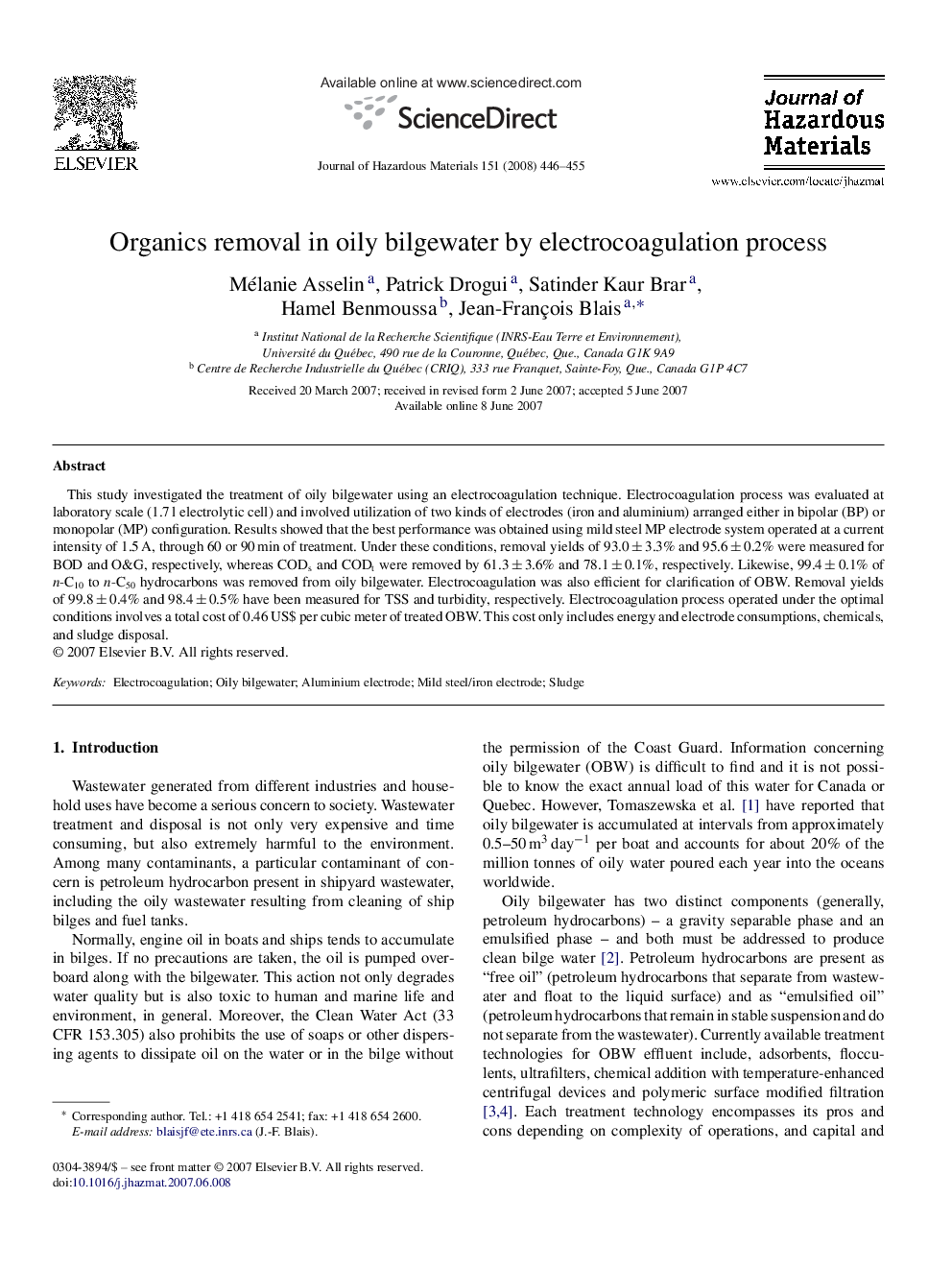| Article ID | Journal | Published Year | Pages | File Type |
|---|---|---|---|---|
| 583461 | Journal of Hazardous Materials | 2008 | 10 Pages |
Abstract
This study investigated the treatment of oily bilgewater using an electrocoagulation technique. Electrocoagulation process was evaluated at laboratory scale (1.7 l electrolytic cell) and involved utilization of two kinds of electrodes (iron and aluminium) arranged either in bipolar (BP) or monopolar (MP) configuration. Results showed that the best performance was obtained using mild steel MP electrode system operated at a current intensity of 1.5 A, through 60 or 90 min of treatment. Under these conditions, removal yields of 93.0 ± 3.3% and 95.6 ± 0.2% were measured for BOD and O&G, respectively, whereas CODs and CODt were removed by 61.3 ± 3.6% and 78.1 ± 0.1%, respectively. Likewise, 99.4 ± 0.1% of n-C10 to n-C50 hydrocarbons was removed from oily bilgewater. Electrocoagulation was also efficient for clarification of OBW. Removal yields of 99.8 ± 0.4% and 98.4 ± 0.5% have been measured for TSS and turbidity, respectively. Electrocoagulation process operated under the optimal conditions involves a total cost of 0.46 US$ per cubic meter of treated OBW. This cost only includes energy and electrode consumptions, chemicals, and sludge disposal.
Related Topics
Physical Sciences and Engineering
Chemical Engineering
Chemical Health and Safety
Authors
Mélanie Asselin, Patrick Drogui, Satinder Kaur Brar, Hamel Benmoussa, Jean-François Blais,
